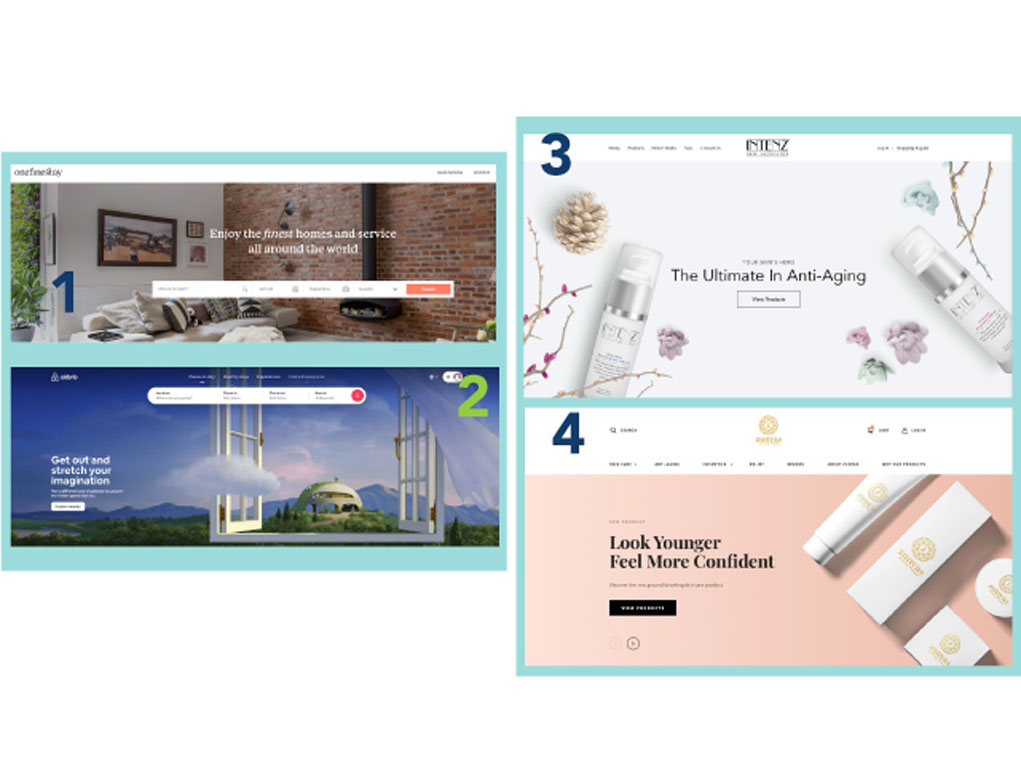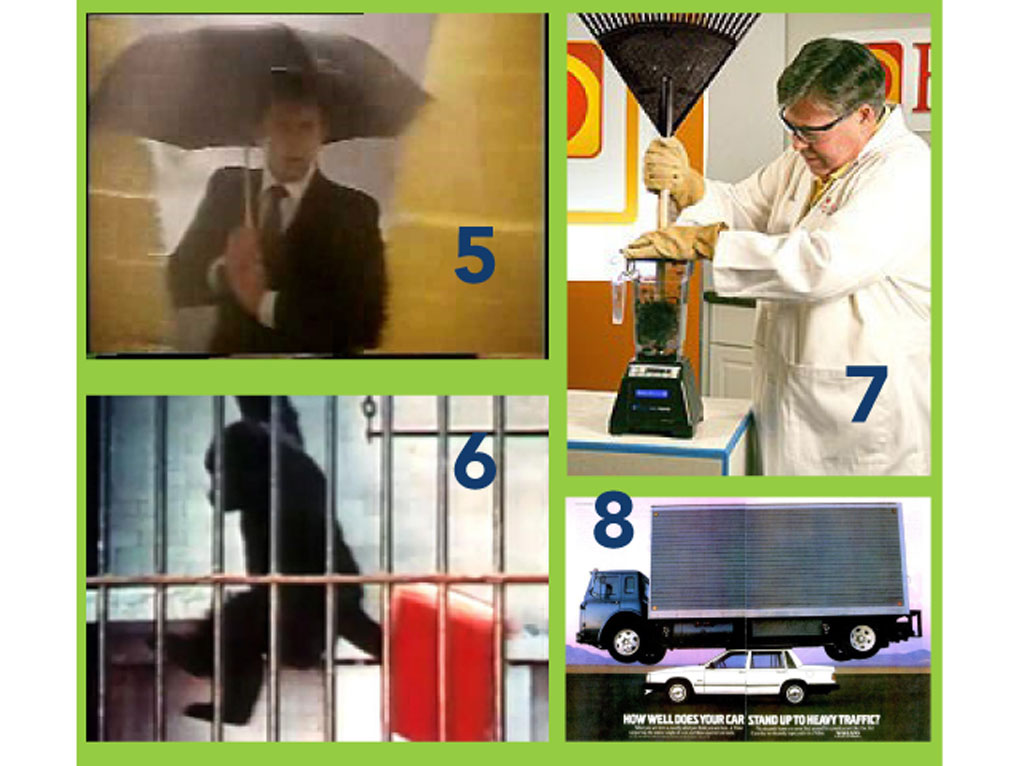Are you bleary eyed? Yawning.
Bored with the endless look-alike B2C and B2B websites you went through?
You knew they cloned sheep – but you were not aware they were cloning websites.
You know it is a clone when the logo is in the upper left corner, because we Americans read left to right. The three-line dropdown menu. The About section with the company “story” loaded with travails impossible to overcome but happily overcome to the benefit of humanity, the planet, or right-whales.
Of course, included is the mission, the purpose, the values – to make you comfortable that the company is an absolute clone of you, so that you could settle into a “relationship,” even better so that you found your doppelganger (more literate word for clone), so that not only do you know who you are, and what you stand for, but by wearing the logo somewhere on your clothes – eyeglasses? forehead? – everyone knows who you are, and you know where you fit it in life.
Today, it is rare to come across a poorly designed B2C or B2b website.
Rare to come across a website where your journey is confusing and problematic. Rare to come across a website where the design does not support the brand.
And, even more rare to find a website that differentiates itself so that it etches itself in your mind. So that you go back numerous times because it speaks to you with the honesty and integrity of absolute originality.
Today, websites are praised by those who are in the know, i.e., define the latest trends, for following their latest trends, for creating sales funnels that effortlessly speed the consumer’s money to the buy now button.
Today it is easy to achieve perfection. Platforms remove the need to master the technology (WordPress alone serves over 37% of the market), free templates pop up every day, stock photos are limitless, and gurus produce guidebooks faster than Trump produced tweets.
 So, what could be wrong?
So, what could be wrong?
What could be missing?
Creativity.
You are building a company. With the movement to online, having a website alone, or in conjunction with your bricks and mortar, is a wise move. Building a website whose design is like all others, familiar and comfortable for consumers, putting you in the center of the crowd in your category, is a safe move.
Until you get lost in the crowd.
Imagine your brick and mortar is in a mall. You have designed the interior, the layout, the presentation, the flow, the promotional material to attract a specific target audience.
Imagine every other brick and mortar in the mall looks the same.
There is no compelling reason for the consumer to choose one over the other.
I had this experience just the other day. I have a strong but small travel umbrella and wanted to add to my umbrella collection (well, actually add to someone else’s umbrella collection, since I know built into every umbrella is a DNA to get lost somewhere) an oversized, beyond strong umbrella.
It did not take long to get bleary eyed – to understand, just review what was written above. Page design, photos, product descriptions, etc. – masterpieces of cloning.
It came down to eenie meenie miney mo, which is how I arrived at my decision. I could not tell you why I chose that umbrella over the others. I cannot even remember the brand name. I cannot think of a reason to recommend it.
Is my perception valid?
The following is for all you web builders and owners who salivate over data.
In an oft-quoted research, Sam Goree and colleagues set out to prove or disprove their perception that websites in vast numbers are prey to “sameness.” As examples for representation, they used websites of the Russel Top 1000, websites of the top American companies by capital valuation. They included Alexa’s top five hundred websites, and a list of website Webby winners.
For imagery data, they used images from those companies accrued in the Internet Archive, and to make the research feasible, they used Artificial Intelligence.
The research validated their perception: Across the board sameness is rampant in websites. Originality, uniqueness, and the spark of creativity are alien to an industry that prides itself on its cookie-cutter design philosophy.
So, where is the problem? Cloned websites do generate sales. But the question I asked clients in my years in Madison Avenue ad agencies is not how much you are losing, but how much you are leaving on the table. Are you meeting your goals, your profit potential?
When everyone is cloning everyone, what is lost is that creative insight, that creative spark, that creative “Eureka” brilliance that differentiates.
Since the birth of modern advertising in the early 20th century, it was the creative genius that turned small, invisible companies into multi-billion-dollar empires. “Think Small” for VW, “Think Differently” for Apple, “When it positively…” for FedEx – campaigns that cut to the core of the product or service’s meaning and value to the end-user.
Campaigns that created loyal relationships that have stayed firm for decades
Playing it safe was never the goal of those who were tasked with building those relationships.
Playing it safe, being lost in the crowd, was anathema. No great campaign was built on templates or Think with Google one-size-fits-all trends and guidelines.
Blood, sweat, and tears went into the campaigns that fill the archives of the Advertising Hall of Fame. “Diamonds Are Forever.” “The Marlboro Man.” “Just Do It.” “Where’s the Beef?”
Had creativity been integrated into the thinking of the umbrella manufacturer, the creative spark could have led them to a simple, yet powerful differentiation.
Check the weather map, get on a plane, and fly to the region that is having a most ferocious storm. Film the umbrella being battered by wind and rain and remaining undamaged.
A visceral visual demonstration on the website that goes beyond words to establish credibility and overwhelm the clone competitors.
Do like minds think alike? Possibly. In going through my archives, I found a years-ago demonstration for Kirps umbrellas. The Kirps spokesperson stood in the center of a car wash in full operation – the umbrella withstanding the savage storm of water and the battering of the huge, harsh brushes.
Demonstrations can be as powerfully effective as any award winning commercial – and many, in fact, do win awards.
Airplane travelers tremble the moment their luggage is put on the conveyor belt. From the condition of their luggage at the end of their travels, they imagine that the bag handler was a 300-pound gorilla. So American Tourister tossed its luggage into a cage with a 300-pound gorilla. A real gorilla. Naturally, being a gorilla, it stomped on the luggage, ferociously smashed it against the steel bars, concrete floor and walls, and even threw it up at the ceiling. The luggage survived with a minor scratch or two, and the lock was still firmly locked. Need American Tourister say more?
For years, the Blendtec blender has been demonstrating the strength of its motor by blending everything but the kitchen sink. Crowbars, Plastic storm troopers. Markers. Marbles. Rake handles. iPads. iPhones. Perhaps someday the blender will indeed blend the kitchen sink.
Volvo has positioned itself as the ‘safe’ car that can withstand the most brutal crashes and roll overs. This demonstration is a powerful demonstration that proves the point and sticks in the mind.
Pilkington Glass had its spokesman pitch its benefits to the audience. Unbeknownst to the spokesperson, behind him a man loaded a rifle, aimed it at him, and fired. Fortunately for the spokesperson, he had been standing behind a Pilkington Glass. Both the spokesperson and the glass survived the live bullet – the glass with spidery cracks.
Here are just a few of the companies that took the mundane demonstration concept, on the lower wrung of creative strategy, and through the creative spark overwhelmed their competition.
So, the question is not how effective your website is, but how much more effective it could be when you do not play it safe, when you sacrifice sameness of creativity, when you demand from your designer differentiation and not cloning.
After all, standing out from the crowd is a safer strategy than being lost in the crowd.
Chanina Katz has over two decades experience in major Madison Ave. ad agencies developing highly successful strategies and award-winning campaigns for such blue-chip clients as Colgate, RJ Reynolds, Hilton, Home Depot, General Mills, KFC and many others in a wide variety of package goods and services businesses. He provides marketing services for a range of businesses, from start-ups to major corporations. He lectures on marketing and creativity. He can be reached at Bullseyemarketing1@gmail.com.








